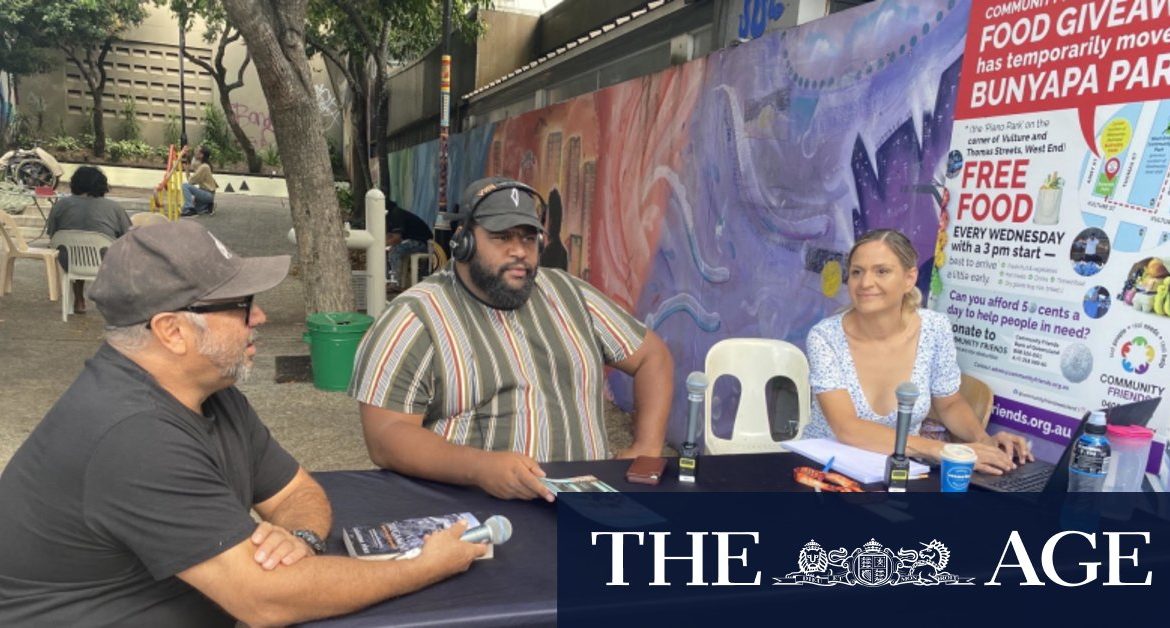“There was a need for black voices in community media around the time of the Commonwealth Games,” Mr Rennie said. “We had to get the word out about the injustice Indigenous people were facing.”
The precursor to the station was Murri Hour on fellow community broadcaster 4ZZZ. Mr Rennie said the two stations shared a “strong history and relationship” that continued to this day.
Eventually Murri Hour became so popular, it acquired a 24-hour broadcasting licence and its own call sign in 1993.
When the 2011 flood hit, 98.9FM was forced to move its operation into a van for about three months due to flood damage at its Yeerongpilly headquarters.
“There was a big outpouring of support from our community. The main thing was to remain on air so that we could keep people informed,” Mr Rennie said.
Keeping up with changes in demand and technology, the station now produces content both on air and online in the form of podcasts and news articles.
“We recognised early on this is how it’s going to be, and I think we’re on the front foot about how we approach the changing media landscape,” Mr Rennie said.
“We are that trusted voice in the community, we make sure there’s no mixed messaging.”
According to UNESCO, even with technological advancements in online streaming, radio is still the most consumed medium worldwide.
A report commissioned by the Community Broadcasting Association of Australia found about a third of Brisbane adults listen to community radio each week.
But 4ZZZ station manager Grace Pashley said funding remained a constant battle.
“Community radios are often very pressed for resources,” she said.
Future premier Annastacia Palaszczuk speaking in support of 4ZZZ at UQ in 1989.Credit:4ZZZ
“We’re always trying to invent a fix to a new technical problem, and we mostly have brilliant staff and helpers to give us that innovation.
“We have about 80 volunteers on the FM channel and 20 on the digital broadcast … we are absolutely a community radio station.”
Like all Australian community sectors in the past year, community radio has had to re-evaluate and redefine how it broadcasts during the COVID-19 pandemic, including from home.
But in a time of enforced separation, community radio has been a source of connection for many listeners.
“It’s a source of consistency and connection throughout these tough times, and it just goes to show that community radio, even though it’s the underdog in terms of resources and funding, is also the thing that people turn to now for a connection to their community,” Ms Pashley said.
Mr Rennie of 98.9FM agreed.
“With COVID-19 … we have found it really critical to connect with people on that personal level. Often they’re marginalised and can’t connect to their family – something that is really important to mob,” he said.
Radio remained one of the most accessible mediums and a priority messenger service in many crisis situations.
In a statement promoting World Radio Day, UNESCO director-general Audrey Azoulay said the “universal humanist medium [and] vector of freedom” was needed more than ever.
“Without radio, the right to information and freedom of expression – and, with them, fundamental freedoms – would be weakened, as would cultural diversity, since community radio stations are the voices of the voiceless,” she said.
UNESCO’s World Radio Day celebrates more than 110 years of radio.
Most Viewed in Culture
Loading







